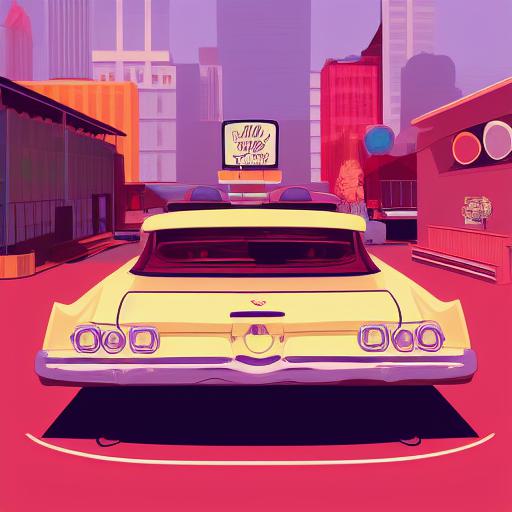Retro illustration art
Retro illustration refers to a style of illustration that was popular in the past, typically between the 1920s and 1970s. This style is characterized by its use of bold, bright colors, simple shapes, and stylized forms. Retro illustrations often incorporate elements of popular culture from the time period they were created, such as advertising, fashion, and music.
Common themes in retro illustrations include pin-up girls, vintage cars, and bold typography. The illustrations were often created using traditional methods such as hand-drawn or painted artwork, as well as printing techniques such as silkscreen or lithography.
Popularity of retro illustration
Today, retro illustration has experienced a resurgence in popularity, with many contemporary artists and designers incorporating elements of this style into their work. The appeal of retro illustration lies in its nostalgic and timeless quality, as well as its ability to convey a sense of fun and playfulness. It can be seen in various mediums, including advertising, packaging, and even in modern digital design.
What is AI-generated art?
The term AI-generated art refers to artwork that is produced using artificial intelligence algorithms, resulting in faster and more efficient image creation. This modern technique offers numerous benefits over traditional art-making methods, such as the ability to experiment with diverse styles and techniques while creating designs that fit specific requirements. AI-generated art also supports diversity and inclusivity within the art world by providing artists from different backgrounds with a platform to express their unique experiences and perspectives.
To incorporate AI-generated art into their projects, designers can easily use online tools like Visual Paradigm Online. Additionally, websites such as Stable Diffusion, Midjourney, and Dalle 2 provide artists with the opportunity to create their own AI-generated art and explore the countless creative possibilities that this technology offers.
How to create this prompt?
The AI image prompt above is a combination of various elements that can influence the image generated by an AI program. The prompt includes a specific scene and setting: a retro car parked in front of a restaurant. This provides a clear visual context for the image and can guide the AI in generating appropriate details, such as the architecture of the restaurant or the surroundings of the scene.
The prompt also specifies the type of artwork to be used as a reference, in this case, vector art by Matt Cavotta. This can influence the style and techniques used in the AI-generated image, as the AI program may try to replicate the characteristics of Cavotta’s vector art style.
The inclusion of additional references such as behance contest winner, american scene painting, googie motifs, James Gilleard artwork, and Jen Bartel can also affect the outcome of the AI-generated image. These references can provide the AI with further visual cues and ideas for the style, composition, color scheme, and overall aesthetic of the image.
Overall, a well-crafted AI image prompt should provide enough details and references to guide the AI program in generating a visually appealing and coherent image. The combination of specific scene and setting, chosen artwork style and references, and other visual elements can all influence the outcome of the AI-generated image.


